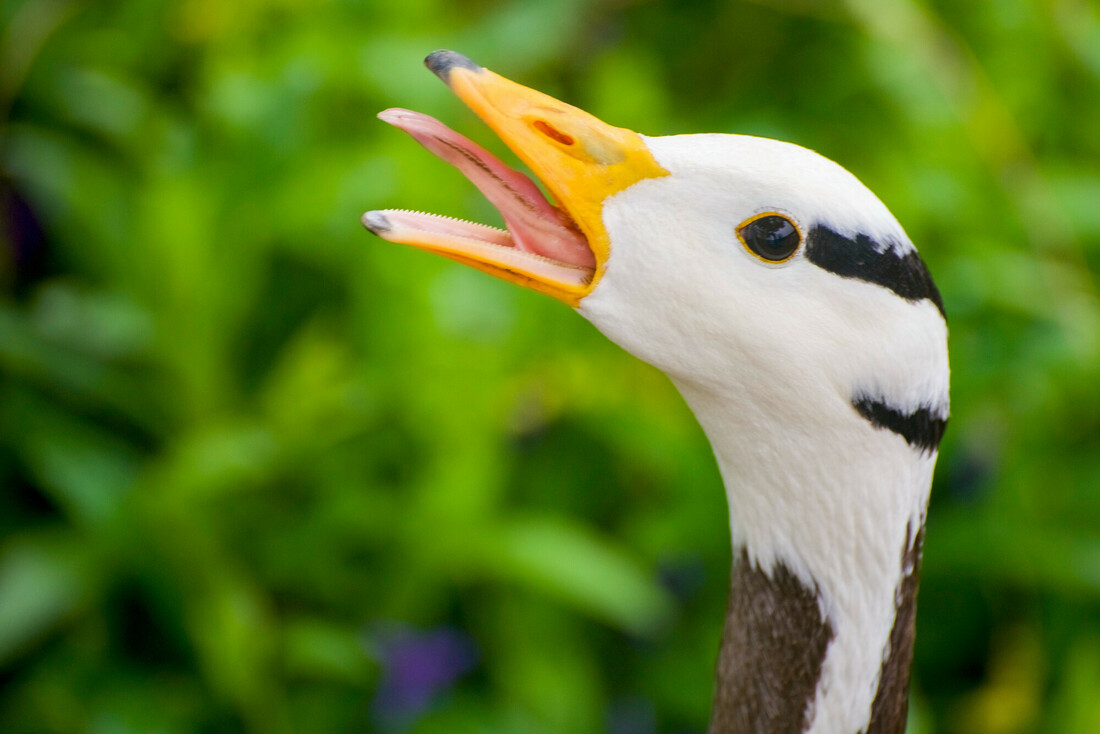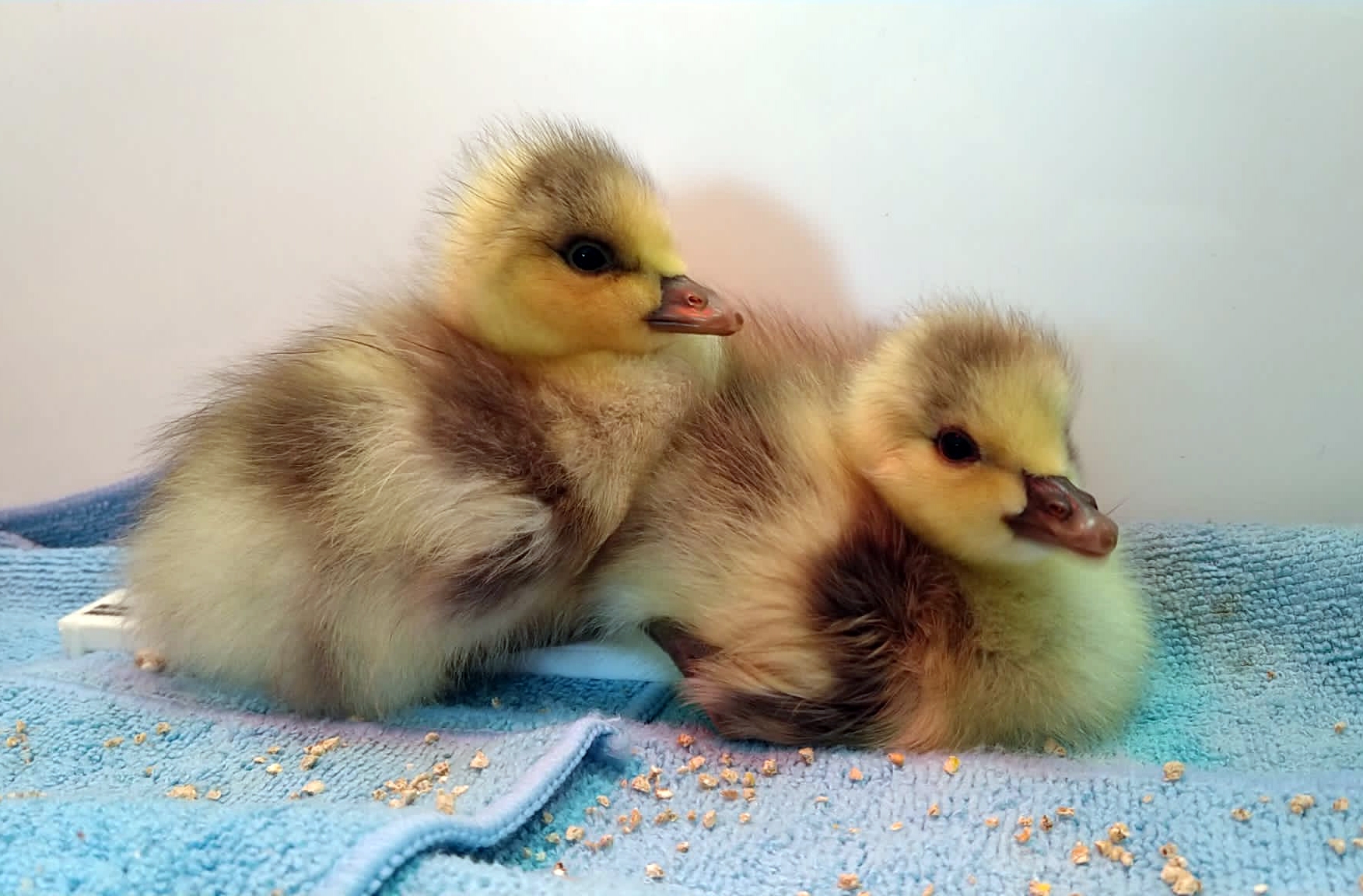November bird of the month: Bar-Headed Goose
Hmm... we wonder where it gets its name?

Each month we shine a light on a different resident species within our Living Collection. For the month of November, we are showcasing the bar-headed goose!
Looking at them, it’s really obvious where they get their name from, as they sport two thick black bars across their heads. The rest of their heads are a beautiful white contrast, with grey plumage for the rest of their bodies. It is a medium sized goose measuring around 73cm and 1.9-3.2kg.
Where do bar-headed geese originate from?
The bar-headed goose breeds in Central Asia, near mountains and lakes. It winters in South Asia.
Where do bar-headed geese breed?
This species of goose breeds during spring to summer in high-altitude regions of Central Asia. They nest on rocky outcrops, cliffs, or islands near water to help avoid predators.

Photo shows two bar-headed goslings from WWT Washington.
The female builds a shallow nest lined with grasses, moss, and down. The clutch size will be around 3-8 pale eggs with incubation lasting around 27-30 days. Once hatched, the goslings are precocial, able to walk and feed shortly after birth, and are led to water by both parents.
Can bar-headed geese really fly over the Himalayan Mountains?
The bar-headed goose is one of the world's highest-flying birds, and can fly 4,500m above sea level, over the Himalayan Mountain range!
These geese have higher quality haemoglobin (a protein in red blood cells that transports oxygen from the lungs to the rest of the body and carries carbon dioxide from the body tissues back to the lungs) for taking up oxygen for their high-altitude flights.
They have large wings and powerful flight which generates body heat. This as well as their down feathers help to retain the heat, which prevents ice build-up on their wings.
Where can you see bar-headed geese at Martin Mere?
To see the bar-headed geese at Martin Mere, head towards the Weird or Wonderful area which showcases a range of amazing wetland species, including Southern Screamers, Inca Terns, and spoonbills.
Inspired to visit?
WWT members enjoy unlimited visits all year round. Or, non-members can save 10% when they book online in advance.



